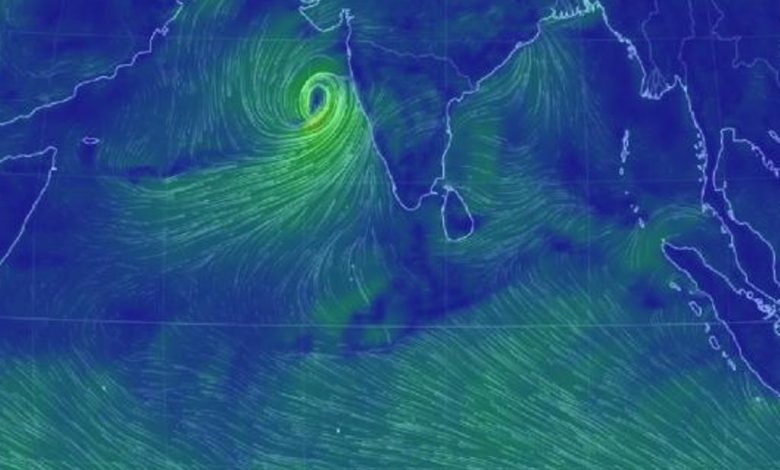Increasing Sea-Surface Temperatures Leading To Sharp Increase In Cyclones In Arabian Sea
Bay of Bengal has witnessed a decrease of 8% in cyclonic storms

The frequency, duration and intensity of cyclones in the Arabian Sea have increased significantly, while there has been a slight decrease in their frequency in the Bay of Bengal according to a new study by scientists at Pune’s Indian Institute of Tropical Meteorology. The paper claims that the frequency of cyclones increased by 52% in the Arabian Sea between 2001 and 2019, while ‘very severe’ cyclones have increased by a whopping 150%.
Meanwhile, the Bay of Bengal has witnessed a decrease of 8% in cyclonic storms. The paper “Changing Status of Tropical Cyclones over the North Indian Ocean” published in the journal Springer, has examined the tropical cyclonic activity in both the Bay of Bengal and the Arabian Sea in terms of frequency, duration, distribution, genesis locations and their tracks for 38 years from 1982 to 2019.
The study establishes that traditionally the ocean and atmospheric conditions were more conducive for tropical cyclone formation in the Bay of Bengal than in the Arabian Sea, however scientists have been observing a growing anomalous pattern in cyclonic activity in the Arabian Sea. In 2015, two back-to-back extremely severe cyclonic storms, Chapala and Megha, occurred within a single month, while in 2018, three out of seven such cyclones occurred in the Arabian Sea. 2019 witnessed the maximum cyclonic activity adding up to eight such events in the north Indian Ocean, out of which five formed in the Arabian Sea. Cyclone Nisarga in 2020 was the first recorded event in history to make landfall on the Maharashtra coast near Mumbai and Tauktae in 2021 was the strongest cyclonic storm to ever affect all four states along the west coast of India.
Dr Roxy Mathew Koll, Senior Scientist at IITM, Pune explains, “The increase in cyclonic activity in the Arabian Sea is tightly linked to the rising ocean temperatures and increased availability of moisture due to global warming. This implies not just an increase in the number of such events, but changes in the pattern and behaviour of cyclonic activity in the North Indian Ocean. The total duration of cyclones has increased significantly along with the intensity of these events.”
According to the study, 92 tropical cyclones occurred between 1982 to 2000 out of which 30% intensified to a ‘very severe cyclonic storm’ category, while the number rose to 100 between 2001 and 2019 with 36% of them intensifying into ‘very severe’. May-June form the first peak season for cyclones in the Arabian Sea and October-November is the second. The Bay of Bengal is active throughout the year except for February and August, although the peak occurs during April-May and then in November. Interestingly, there has been an 80% increase in the total duration of cyclones in the Arabian Sea during the last two decades, while the duration of very severe cyclones has increased by 260%. No significant change has been observed in the duration of cyclones in the Bay of Bengal.
The intensity of cyclones also has increased in the Arabian Sea, by about 20% (post-monsoon) to 40% (pre-monsoon). The genesis and intensification of a cyclone are governed by various parameters like sea-surface temperatures, relative humidity, moist static energy, low-level vorticity, vertical wind shear etc. The study claims that during pre-monsoon the genesis patterns are increasing over parts of central Arabian Sea and near Somalia, but decreasing near Oman and Yemen. While, there is a decreasing trend over the east Bay of Bengal, an increasing trend in the west Bay of Bengal in genesis patterns is noted. During post-monsoon, there is a significant increasing trend over the east Arabian Sea and a decreasing trend over the west Bay of Bengal.
Previous studies have shown the influence of the rapid warming of the entire north Indian Ocean on increasing cyclonic activity along the Indian coasts. However the study notes although the sea-surface temperature shows a significant pre-monsoon increase over the entire Arabian Sea and north-east part of Bay of Bengal, the tropical cyclone heat potential is increasing only over the Indian coast of the Arabian Sea and part of east and central Bay of Bengal, signifying warning trends for India.
Views expressed here are those of Dr. Seema Javed, a known Environmentalist, Journalist and Communications




